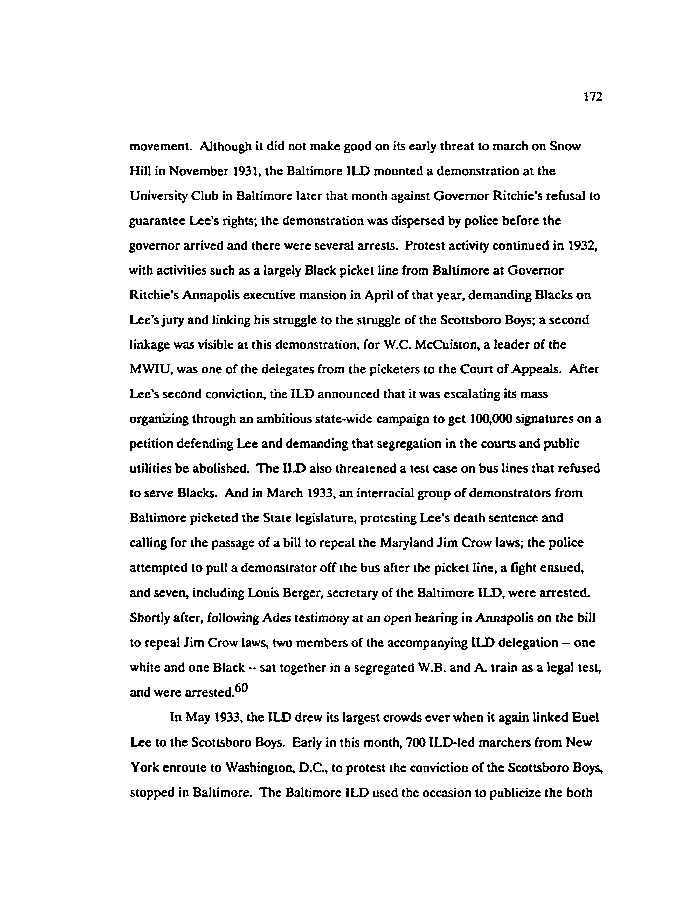|
172
movement. Although it did not make good on its early threat to march on Snow
Hill in November 1931, the Baltimore ILD mounted a demonstration at the
University Club in Baltimore later that month against Governor Ritchie's refusal to
guarantee Lee's rights; the demonstration was dispersed by police before the
governor arrived and there were several arrests. Protest activity continued in 1932,
with activities such as a largely Black picket line from Baltimore at Governor
Ritchie's Annapolis executive mansion in April of that year, demanding Blacks on
Lee's jury and linking his struggle to the struggle of the Scottsboro Boys; a second
linkage was visible at this demonstration, for W.C. McCuiston, a leader of the
MWIU, was one of the delegates from the picketers to the Court of Appeals. After
Lee's second conviction, the ILD announced that it was escalating its mass
organizing through an ambitious state-wide campaign to get 100,000 signatures on a
petition defending Lee and demanding that segregation in the courts and public
utilities be abolished. The ILD also threatened a test case on bus lines that refused
to serve Blacks. And in March 1933, an interracial group of demonstrators from
Baltimore picketed the State legislature, protesting Lee's death sentence and
calling for the passage of a bill to repeal the Maryland Jim Crow laws; the police
attempted to pull a demonstrator off the bus after the picket line, a fight ensued,
and seven, including Louis Berger, secretary of the Baltimore ILD, were arrested.
Shortly after, following Ades testimony at an open hearing in Annapolis on the bill
to repeal Jim Crow laws, two members of the accompanying ILD delegation — one
white and one Black - sat together in a segregated W.B. and A. train as a legal test,
and were arrested. "
In May 1933, the ILD drew its largest crowds ever when it again linked Euel
Lee to the Scottsboro Boys. Early in this month, 700 ILD-Ied marchers from New
York enroute to Washington, D.C., to protest the conviction of the Scottsboro Boys,
stopped in Baltimore. The Baltimore ILD used the occasion to publicize the both
|

